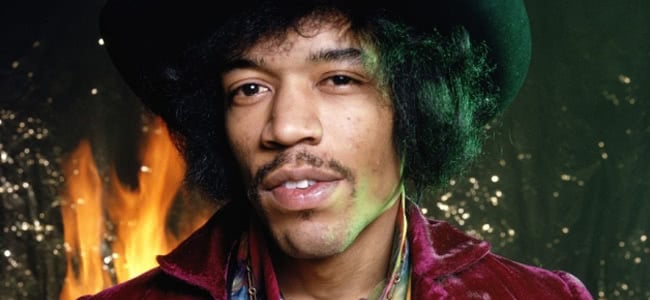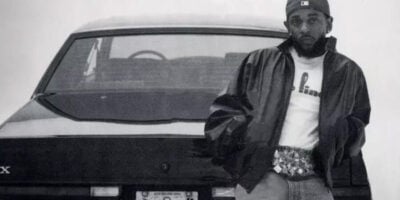Jimi Hendrix is recognised world-wide as one of the most creative and influential musicians of last century. A true genius and pioneer of popular culture, Jimi unleashed the creative potential of the electric guitar. His innovative playing style combined the blues with feedback, fuzz, distortion and much more to create a new form of guitar-based music that would inspire musicians for generations to come. What makes the Hendrix legacy even more remarkable is the fact that his meteoric rise took place over only four very short years- his band The Jimi Hendrix Experience only released three albums during his lifetime.
So, regardless of your experience (sorry, bad pun) of Jimi’s music, whether you’re a die-hard aficionado or a new fan, here are eight essential songs that give you a glimpse into the world of one of rock n roll’s true geniuses.
‘Hey Joe’ (1965)
Hey Joe (originally written by Billy Roberts) reached UK chart position no six. It was the first single released by Hendrix. His manager, former Animals bassist Chas chandler, first heard Jimi perform this song at Café Wah in New York. Chandler was already keen to make a recording of this song and was so blown away by Hendrix that he signed him there and then with the view to bringing him to London. Ironically, Jimi never enjoyed performing Hey Joe live and famously cut short one television performance of the song on The Lulu Show to segue into a version of Cream’s ‘Sunshine of Your Love’.
‘Star Spangled Banner’ Live At Woodstock (1969)
One of Jimi Hendrix’s most famous performances was in 1969 when he headlined the Woodstock festival. As part of his set he played a rendition of the USA national anthem Star Spangled Banner. Jimi used masses of wah-wah, feedback and distortion to replicate the sound of bullets, bombs and people screaming- something critics saw as a statement against the Vietnam War. Jimi’s performance at Woodstock is considered one of the defining moments of the sixties.
‘Purple Haze’ (1967)
Purple Haze was the second single released by The Jimi Hendrix Experience. Many fans assume that the song was about, or inspired by, Jimi’s experimentation with psychedelic drugs, something he always denied. Hendrix claimed the lyrics are based on a dream he had where he was walking through the sea. Purple Haze was the most commercially successful single released during his lifetime, reaching number three in the UK charts; it was later voted the greatest guitar song of all time by Q magazine, and the second greatest by Rolling Stone.
‘Dolly Dagger’ (1971)
“Groupies” were never too far from Jimi and the song Dolly Dagger was written for famous “groupie” and one time girlfriend of both Jimi and Mick Jagger, Devon Wilson. During 1970 Jimi’s band would often open their sets with this song, although it was never released during his lifetime: it featured posthumously on the Rainbow Bridge soundtrack album.
The lyrics were supposedly inspired by an incident at a party when Mick, Jimi and Devon were partying and Mick cut his finger. Devon’s response was to grab Mick’s hand and suck the blood from the cut. This led to the line “she drinks the blood from the jagged edge”.
‘All Along The Watchtower (1968)
Jimi was an obsessive fan of Bob Dylan and had been playing Dylan songs in his live shows for years prior to the recording of All Along the Watchtower for the Electric Ladyland album sessions. Jimi’s friend, founding member of The Rolling Stones Brian Jones, plays the vibra-slap on this track- something that took him over 27 takes to get right because he was so drunk. Bob Dylan was completely blown away by Jimi’s version of the song. He said: “It overwhelmed me, really. He had such talent, he could find things inside a song and vigorously develop them.
He found things that other people wouldn’t think of finding in there. He probably improved upon it by the spaces he was using. I took license with the song from his version, actually, and continue to do it to this day.”
Red House (1966)
Although Hendrix isn’t considered purely a blues guitarist, Red House confirms him as a master of the genre. Blues was a massive part of Jimi’s roots and he stays true to the traditional twelve bar structure for this song. The lyrics deal with lost love, a common theme in blues music, and it’s given a comedic twist- “if my baby don’t love me no more, I know her sister will.”
Did you know? The red house Jimi sings about is in the Haight Ashbury district of San Francisco and is still photographed by fans every year.
Crosstown Traffic (1968)
This short, funky song also features on Electric Ladyland. For the lyrics, Jimi uses Manhattan’s famously thick east-west traffic congestion as a metaphor for his frustrations with a woman. Always one to experiment, Jimi played a makeshift kazoo on the track by using a comb and tissue paper. Crosstown Traffic is reminiscent of the song Strange Brew by Jimi’s favourite band- Cream.
Voodoo Child (slight return) / Voodoo Chile (1970)
After his tragic death in 1970, ‘Voodoo Child’ (slight return) was released under the title ‘Voodoo Chile’ in the British singles charts. It is the only Jimi Hendrix single ever to reach number one. The final track on Electric Ladyland, ‘Voodoo Child’ is an improvisational guitar piece with the iconic introduction on WAHWAH/ slap back delay guitar. This is one of Jimi’s best known songs and featured as a centre piece in performances throughout his whole career. “Well I stand up next to a mountain, and I chop it down with the edge of my hand.”
Now you’re reacquainted with the talents of Henrix be sure to catch the Jimi Hendrix Re-Experience in Melbourne.
Jimi Hendrix Re-Experience
Thursday January 15th
Laundry Bar, 50 Johnston St Fitzroy
Tickets and info: tickets.oztix.com.au
Facebook event

































